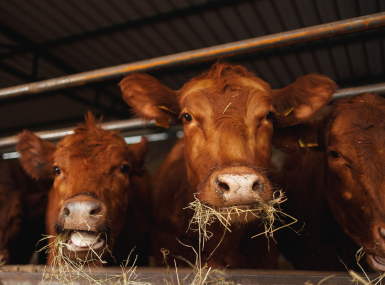CMS unveils new behavioral health model to advance health care integration
Author

Blaire Bryant

Naomi Freel
Upcoming Events
Related News

Key Takeaways
On January 18, the Centers for Medicare & Medicaid Services (CMS) introduced the Innovation in Behavioral Health (IBH) Model. This model aims to improve care quality and outcomes for individuals with moderate to severe mental health conditions and substance use disorders (SUD) by bridging the gap between behavioral and physical healthcare. CMS will release a Notice of Funding Opportunity (NOFO) in Spring 2024, selecting up to eight states to participate in the eight-year IBH Model. These states will collaborate with their respective state Medicaid agencies (SMAs) and work with Medicaid Managed Care Organizations (MCOs) or other partners to develop and implement the model.
Key Features of the IBH Model
- Person-centered, integrated care approach: Involves interprofessional care teams (practice participants) in each state, led by community-based behavioral health organizations. These organizations include community mental health centers, public or private practices, opioid treatment programs, and safety net providers offering outpatient mental health and substance use disorder (SUD) services. The care teams aim to provide a holistic approach to health services by addressing mental health, physical health, and health-related social needs (HRSN) like housing, food, and transportation.
- Targeted at Medicaid and Medicare beneficiaries: Practice participants can utilize Medicaid and Medicare-aligned payment models to deliver services. To be eligible, they must meet specific criteria at the time of application.
- Health equity focus: Practice participants will develop Health Equity Plans to address disparities within their service populations, aligning with the model's commitment to health equity
IBH Model's Impact on Counties
- Optimizes county resources with integrated care: As overseers of local healthcare, mental health, and behavioral health services, and as the last-resort payors, fragmented care negatively influences residents' health outcomes and imposes substantial fiscal burdens on county governments. The IBH Model's integrated care approach efficiently targets gaps in access, frequent emergency department visits, and overall poor health outcomes. This ensures more effective and streamlined addressing of individual behavioral health and healthcare needs, maximizing the utilization of county resources.
- Payment System Reforms to Enhance Workforce Attraction and Retention: The IBH model aims to facilitate the shift from fee-for-service (FFS) to value-based payments and the NOFO will likely include details on performance-based payments for selected participants. Merit-based payment incentives could prove valuable for counties in selected states seeking to recruit and retain a qualified workforce.
- Federal Funding Boost for Behavioral Health IT Expansion (Critical County Priority): The model offers financial support to enhance local behavioral health IT systems, focusing on electronic health records (EHRs) and the development of interoperability standards. NACo advocates for federal assistance to promote the adoption of behavioral health IT, establishing a modern foundation for documenting and exchanging patient records through EHRs.
Want to see what else NACo is doing in the fight for Mental Health Parity?
Featured Initiative
Opioid Solutions Center
NACo's Opioid Solutions Center empowers local leaders to invest resources in effective treatment, recovery, prevention and harm reduction practices that save lives and address the underlying causes of substance use disorder.

Related News

USDA and HHS release new dietary guidelines
On January 7, U.S. Department of Agriculture Secretary Brooke Rollins and U.S. Department of Health and Human Services Secretary Robert F. Kennedy, Jr. unveiled the new Dietary Guidelines for Americans, 2025–2030.

SAMHSA cancels, reinstates thousands of behavioral health grants
Late on Wednesday, January 14, the Administration announced that thousands of Substance Abuse and Mental Health Services Administration (SAMHSA) grants that had been terminated just one day earlier would be reinstated.

House passes three-year extension of ACA Enhanced Premium Tax Credits
On January 8, the U.S. House of Representatives passed legislation to extend enhanced Affordable Care Act (ACA) premium tax credits (EPTCs) for three years, sending the measure to the Senate as lawmakers work to negotiate a bipartisan compromise.